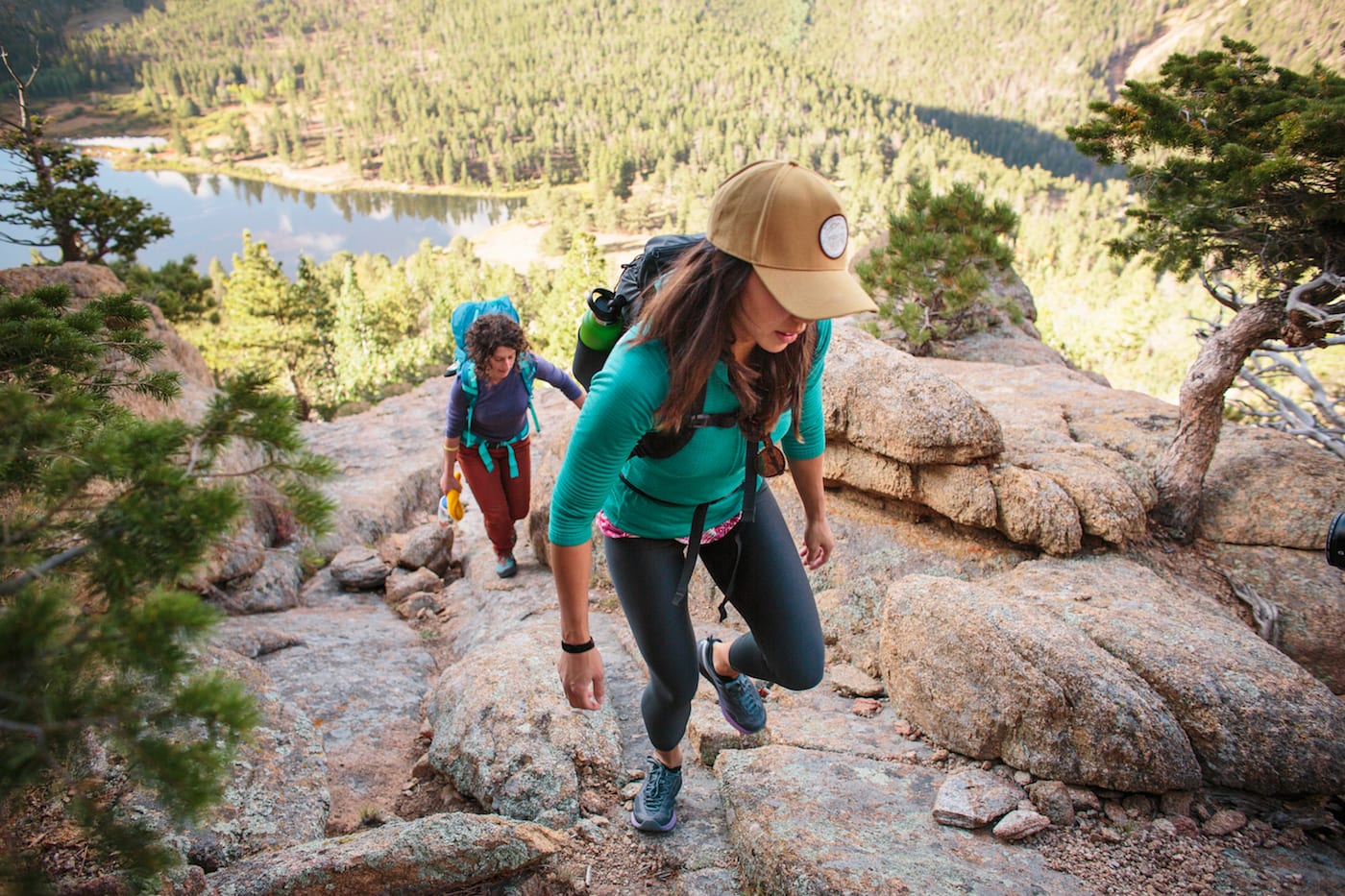
How to Get Into Hiking – All Your Questions Answered
Estimated reading time: 16 minutes
Many people would love to get into hiking, but face the trouble of getting started.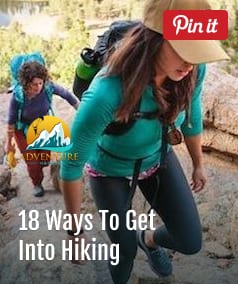
If you’re one of them, you don’t need to stress.
This post is here to inspire your next step toward an adventurous hiking experience.
Table of Contents
How to Get Started with Hiking
Getting into hiking doesn’t require a lot and neither is hiking itself a tough experience.
It’s one of the simplest ways to get yourself enjoying nature, fresh air and enhanced blood flow, but only if you prepare well.
You can always check trail closures and acquire local maps from the National Park Service.
Here’s a list of all you need to know and do to get started hiking:
1. What Gear Is Needed for Hiking?

Proving his LifeStraw Is The Real Deal.
The type of gear you need will depend on the weather conditions that are likely to prevail and the number of days you’re going to spend hiking. A single day hike will just require some comfortable boots or shoes and other necessary items such as sun protection equipment and water. However, if you will be hiking for several days, you’ll need to carry a complete camping setup which would include materials for cooking and sleeping bags among others.
If that’s the case, check out my essential backpacking gear list.
2. What Kind Of Shoes Are Needed for Hiking?

Taking a moment during my spontaneous off-grid NewForest hike in England.
Your personal preferences might determine the kind of shoes to carry, but the trail conditions and the amount of weight you expect to carry can factor in. Generally, you would consider trail running and hiking shoes for a day hike.
Both mid cut and full boots are good for several days hiking since they offer good support for ankles. This can enable you to enjoy hiking for a longer period if you do not have stronger leg muscles. On the other hand, if you expect to go through bad weather and tough trails, the heavy-duty and waterproof boots will be helpful. With such boots, you will be able to grip on rough terrain and carry heavy loads on your back as they support your ankles and feet.
I personally hike in either Brooks Cascadia 12s (single day hikes) or my La Sportiva High GTX (multi day hikes).
Both options allow you to wear sturdy hiking shoes and come in men’s and women’s.
3. What Kind Of Clothes Are Needed for Hiking?
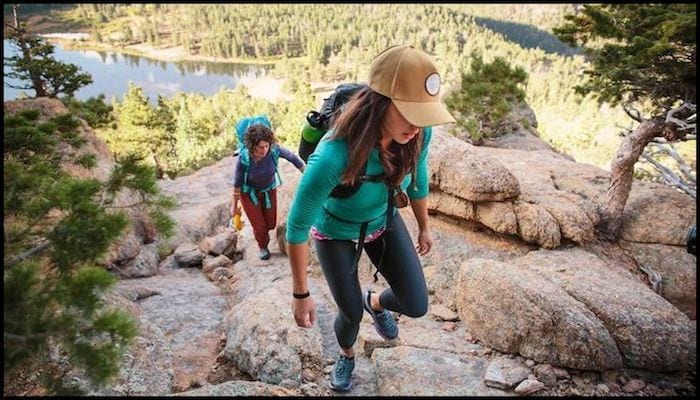
Loudpack Ladies Rocking Low Cost, High Quality Hiking Clothes In The Sierras
The type of weather will determine the type of clothes, but it is advisable to dress in layers in order to moderate the temperatures, not too cold or too hot. Dressing this way means you will need a thermal layer, an insulating layer and a waterproof layer that can protect you from raindrops. Synthetic fibres and merino wool are great materials for such layers of dressing since they dry quickly and can be used regularly.
Definitely check out our Backpacking Gear Guide – many of the suggestions overlap into regular hiking.
4. How To Prevent Injuries Like Blisters, Cuts Or Breaks While Hiking?

My Knee After Being Stabbed With A Poison Oak Branch… Gross.
Preventing blisters is easily manageable by avoiding friction between rough surfaces and your feet or hands. Gloves can help prevent blisters o your hand while simple tricks like applying a light layer of petroleum jelly on your feet before wearing your socks can ease the friction between your feet and the boots or shoes. Apart from this, you can also start with shorter trails as you adapt to a new pair of hiking boots.
This great article shows how to treat six of the most common backcountry injuries.
5. Do I need hiking poles?
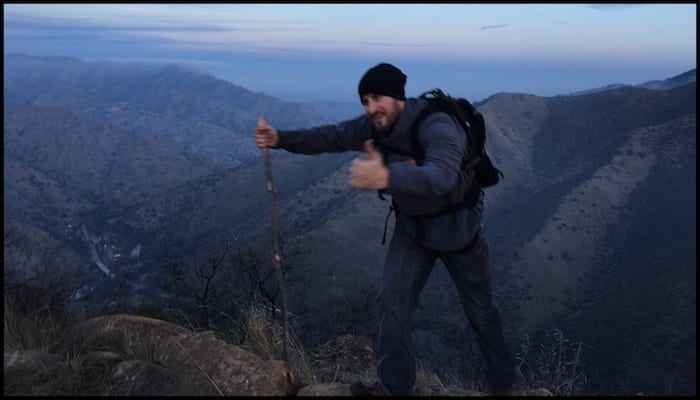
Chase Showing Off His Handmade Manzanita Walking Stick – Trying Not To Fall Off The Cliff
Do you have the feeling that hiking poles are meant for grannies? Well, you could be wrong. Anyone who needs to keep balance when trekking with a heavy load has to consider the hiking pole. The poles can also save your knees on steep uphills and downhills. Nonetheless, it`s up to you to decide whether you might need one.
If I don’t use a branch from the trail, I’ll use my BAFX Anit Shock Trekking Poles.
6. What Size Backpack Is Needed for Hiking?

Tsam & Wavy Rocking Different Hiking Packs In Bear Valley
Again, the number of days you plan to go hiking is part of what determines the size of the backpack. However, you have to consider if you will be staying in lodges or camping.
Weekend Trips of around 1-3 nights usually need 35-50 litres while several days, around 3-5 nights require 50-80 litres. Longer trips, usually more than a week, would require you to carry a backpack of more than 70 litres in volume.
I’ve never been more happy than I am with my 52-Liter Ultralight Osprey Variant.
7. I Want To Multi-Day Hike But Can’t Afford The Equipment – What To Do?
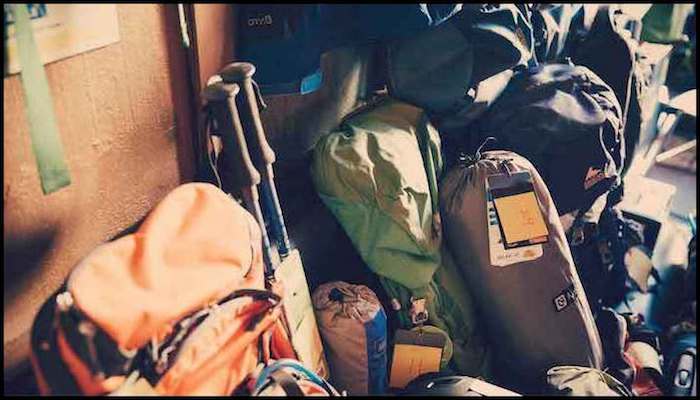
You Can Find Great Deals On This Website, Garage Sales, REI Garage Sales, & Craigslist.
If you plan to go hiking for several days you’ll probably need an intense gear regardless of whether you can afford it or not. In the case that you cannot afford it, there are options.
First, you can team up with a fellow hiker and you can combine your gear to make it complete. Secondly, you can opt for trails with lodges or huts along the way to help cut out the need for tents or even cooking equipment. Finally, renting gear can save you especially if you are just getting into hiking and not sure if you will like it.
You can rent gear from any outdoor store that offers camping equipment.
I’m all about bang for your buck, and my Essential Ultralight Backpacking Gear List focuses on just that.
8. Where Is A Good Place To Buy Outdoor Gear?

We carry a wide variety of name-brand products at incredibly competitive prices.
You might easily get overwhelmed with the various features and models out there. Local outdoor shops might help you start out if you are confused. Even so, this site is one of the best places you can get the gear and advice on what you might need. You can check out the gear reviews and guides and other items you might need.
You can take a look at all of our trail tested gear.
9. What Should I Pack In My First Aid Kit?
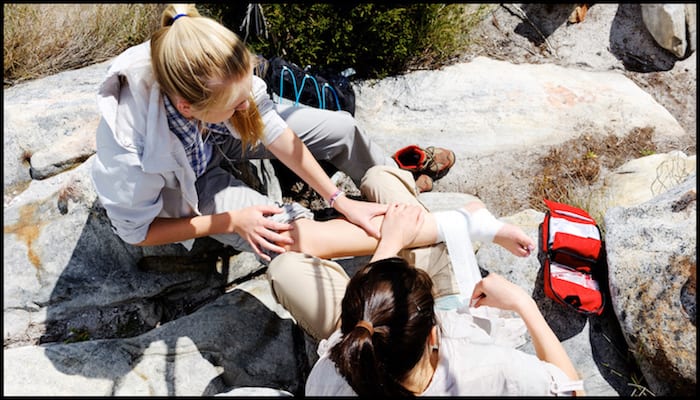
Better to have a first aid kit and not need it, than need it and not have one.
Your kit has to be complete with all the necessary tools for first aid treatment. A pre-assembled or custom kit would be helpful because damages can occur unexpectedly. A complete kit will ensure that any injuries care for to prevent further damage and the risks of unexpected complications reduced.
In case you or one of your friends and family has health problems such as allergic reactions, additional equipment might be necessary to help in case the known health condition occurs. As you pack the necessary tools, it would be wise to consider the number of days you are going to spend and the number of people you are going with.
Bookmark HealthIssuesFixed as it is an invaluable, easy to digest health & medical resource.
Your kit should basically contain essentials such as medical tapes, sterile gauze, antibiotic ointment, alcohol wipes, adhesive bandages, Benadryl, ibuprofen, and moleskin.
I don’t go on any adventure without my SurvivorWare First Aid Kit.
10. How Do I Stay Dry During My Hike?

Myself aka McPoncho Staying Dry During A Spring Storm In Northern California
Fully waterproof rain pants and jackets will keep you dry in rainy weather. It’s good to not that waterproof clothes have seam-sealed zips and breathable liners and should not be confused with water-resistant clothes that have none of these.
Apart from your body, your backpack also needs to be dry so that your sleeping bag or clothes also stay dry. A pack cover or a pack liner can help.
I overheat, so my Large Osprey Ultralight Rain Cover has come in handy on many occasions.
11. What Are Some Easy & Quick Hiking Meals?
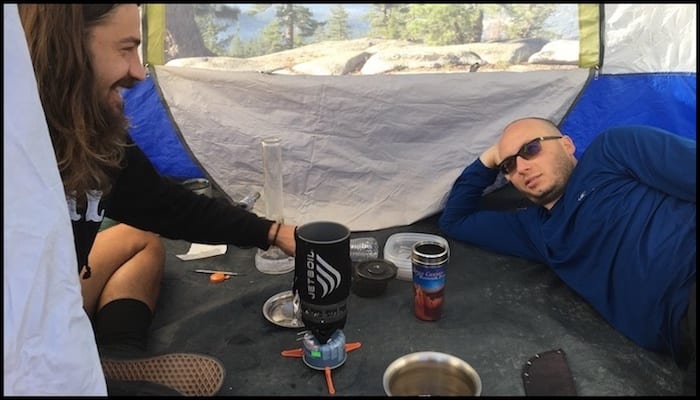
Two Blessed Souls I’m Proud To Call Friends, Whipping Up A Pre-Hike Meal.
As a hiker, you will need to make a good plan for your meals. As you plan, you keep in mind your favourite foods as well as the possibility to carry and store your favourite choice. Though they are expensive, freeze dry meals are easy to go with since most of them are light, tasty and easy to prepare.
Apart from the freeze dry, both dry and fresh fruits, oatmeal, bread, tea, granola bars, coffee, and juice would make a healthy breakfast while sandwiches can make lunch great. For dinner, pasta or instant rice and instant potatoes can work well.
You can get a JetBoil Flash and rehydrate freeze dried food or to cook on the trail.
I personally like to dehydrate jerky before I hike.
This is an efficient way to bring additional calories on the trail.
Here’s my favorite jerky recipe… Makes enough jerky for 1 hike.
TANGY TRAIL JERKY
Ingredients:
- 2lb Raw Lean Meat (beef round, chuck venison, etc.)
- 1 Cup Pineapple Juice
- 2 Cloves of Garlic (Minced)
- 2 Tablespoon Soy or Tamari Sauce
- 2 Tablespoon Lemon Juice
Instructions:
- Mix First Four Ingredients.
- Add Meat, Cover & Refridgerate 2-4 Hours
- Dry At 140 Degrees Until Done (if piece break when you bend, they’re ready)
12. What Are The Tastiest Trail Snacks?

These (Trail Mix Bliss) Balls Are Delicious.
Snacks are great for any trip but for a perfect trailing experience, you will need fruits, cookies, chocolate, granola bars and trail mix cheese. Other snacks of your choice can also be great as long as they make you fill happy.
Here’s an awesome recipe I found on FreshOffTheGrid…
TRAIL MIX BLISS BALLS:
INGREDIENTS
- 10 dates pitted and soaked in water for 10 minutes
- 1/4 cup cashews*
- 3 tablespoons pepitas
- 3 tablespoons dried cranberries
INSTRUCTIONS
-
In a Vitamix or a food processor, process the dates and cashews until a sticky dough forms.
-
Divide the dough into 8 equal parts and roll between your palms to create a ball.
-
Spread the pepitas and cranberries on a flat surface (like a cutting board or plate) and roll the balls over them to coat.
-
Store the bliss balls in an airtight container in the fridge until you’re ready to hit the trail!
*if you’re using a blender, you can skip soaking the cashews, otherwise soak them in warm water to soften.
13. What Is The Best Way To Purify Water on a Hike?

Pocket Water Filters Are A Game-changer & Should Probably Be Carried Even If You Brought Water.
For long distance hikers, it’s fun taking water directly from the less common sources like streams, rivers or lakes. However, you must first make sure that the water is safe before drinking it. If it requires treatment, then water treatment tablets, pump filters, UV light filters and boiling can make the water safe.
Boiling is the cheapest method but requires time and other equipment like a stove and a pot for purification. Water treatment tablets like chlorine and iodine are safe and easy to use though they take time to purify water and add a bad flavour.
Pump filters, on the other hand, work a bit faster but they are bulky and additionally requires something to collect the water. This can be irritating if you are in a hurry. The UV light filters are simple to use since it takes less time to purify water, but its the most expensive option out of all the other water purification options.
The best option in terms of portability and effectiveness is the LifeStraw.
14. What Drinks Are Great For Hiking?
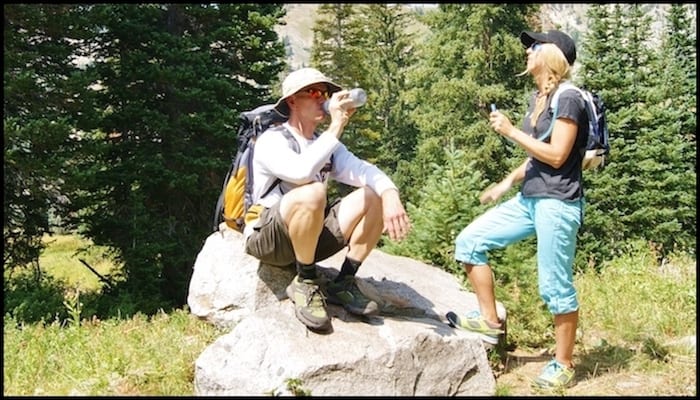
There’s No Better Hiking Drink Than Water.
Drinking water throughout can be monotonous, albeit necessary.
Carrying extra electrolyte enhanced drinks such as Nuun, and Vega can help energize you throughout. Drink mixes are also great if you do not feel like eating any food especially when you fall sick; they will often provide some calories along the way.
You can grab a 30-pack of Berry Vega Electrolyte Hydrators (Vegan Recipe).
15. How To Handle Bears & Other Wildlife

Not So Friendly Mountain Lion Warning Near One Of My Favorite Trails.
In the course of a hiking trail, you might encounter wild animals. Pumas and bears are notorious for showing up during a hiking expedition, but they might end up causing no havoc if you learn how to avoid conflicts with them.
In case you see a bear, slowly back away. Avoid running and, in case the bear shows aggressiveness, prepare your bear spray. If the bear attacks, use the bear spray and swivel to prevent it from attacking you. remember to move slowly to avoid appearing as a prey, but in case the bear makes contact with you, play dead!
Lay on your stomach while spreading your legs to prevent the bear from flipping you onto your back. It is unlikely that the bear might start biting you. Nonetheless, you might turn out to be a new flavour the bear or any other animal would like to taste. In such a case, fight back aggressively and use any weapon around you.
Carrying a collapsible baton is a good idea for any avid hiker.
16. I’m Not Fit Enough For All-Day Hikes, Where Should I Begin?
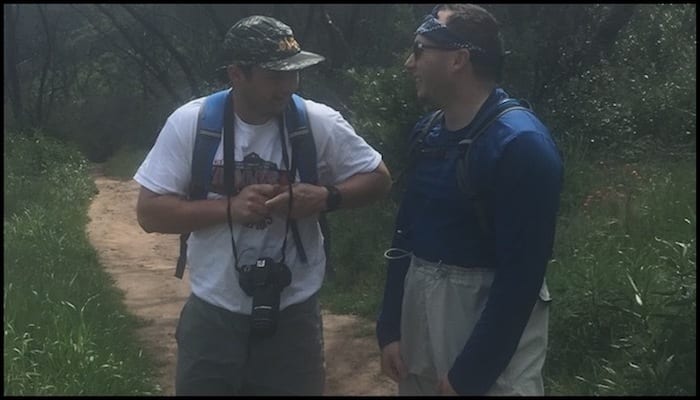
Lucas & Wavy Doin What They Do On The Hiking Trail.
Getting out on the rails is a great way to help you get in shape for the hiking.
Start with a local trail which could provide a relatively flat environment that you could go through in a short time during the weekends.
Doing this regularly will help you be fit in the long run.
You can find a hiking trail near you by using our Custom Adventure Search.
17. What Do I Need To Stay Safe While Hiking?
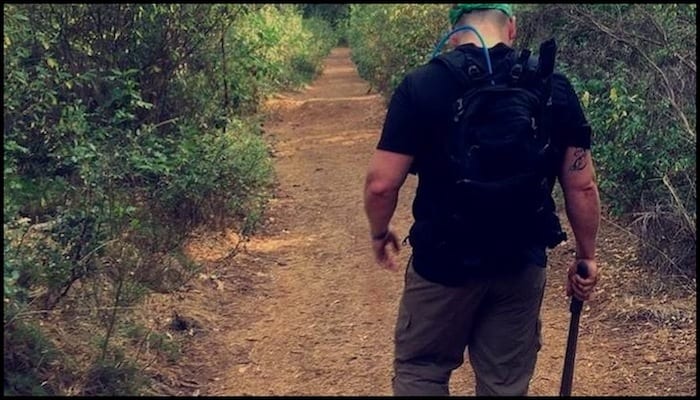
Hiking is considered one of the safest activities but still poses some risks. You should be aware of the possible risks to avoid them. You might run into an animal or human who might want to attack you. A simple weapon such as a survival stick or knife can help prevent or cut the effects of the attack. To avoid the risk of getting lost, a map could help you trace your way but you should also let your fellow hikers know where you will be.
18. My Friends Don’t Like Hiking, How Can I Find Others To Join?

Point Reyes Team Photo, From Left to Right -> Shannon, David, Mark, Lucas, Malcom, Lexi & Joe
There are plenty of hiking clubs that can help you connect with other hikers. In fact, you can join our Facebook community to meet people near you.
Some additional places to meet adventure buddies include:
- Trekking Partners
- National Parks
- American Hiking Society
- Sierra Club
- Meet Up
- South American Explorers Club
That’s about it for this post.
If you have any hiking questions or just want to say hi…
Drop me a line in the comments section below.
To your next adventure!
– About David AstonDavid Aston
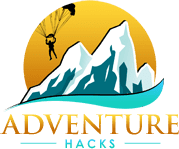

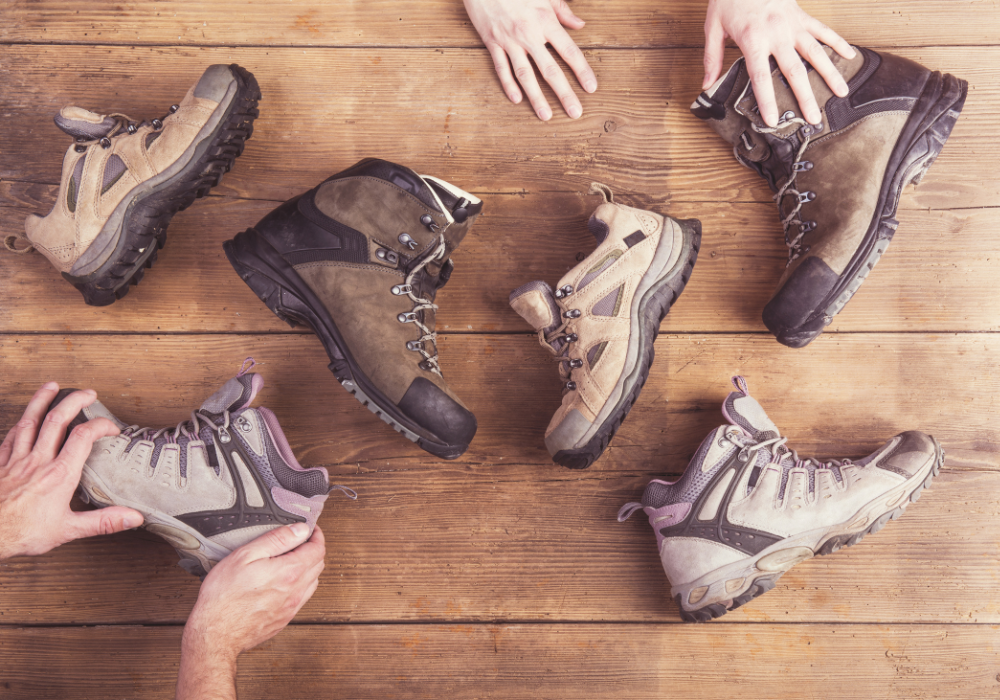
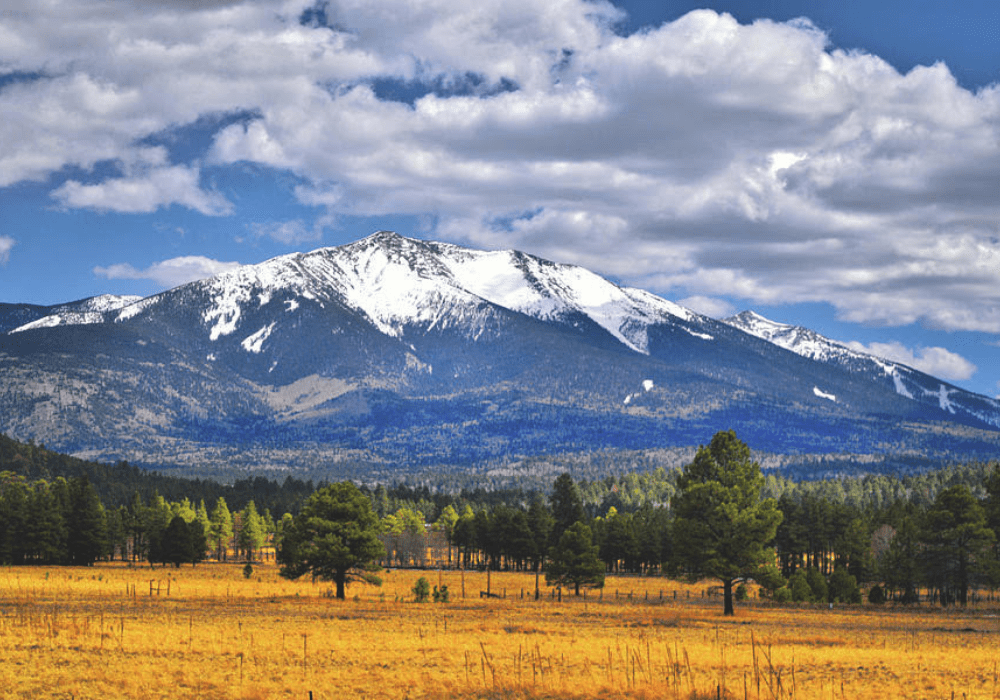
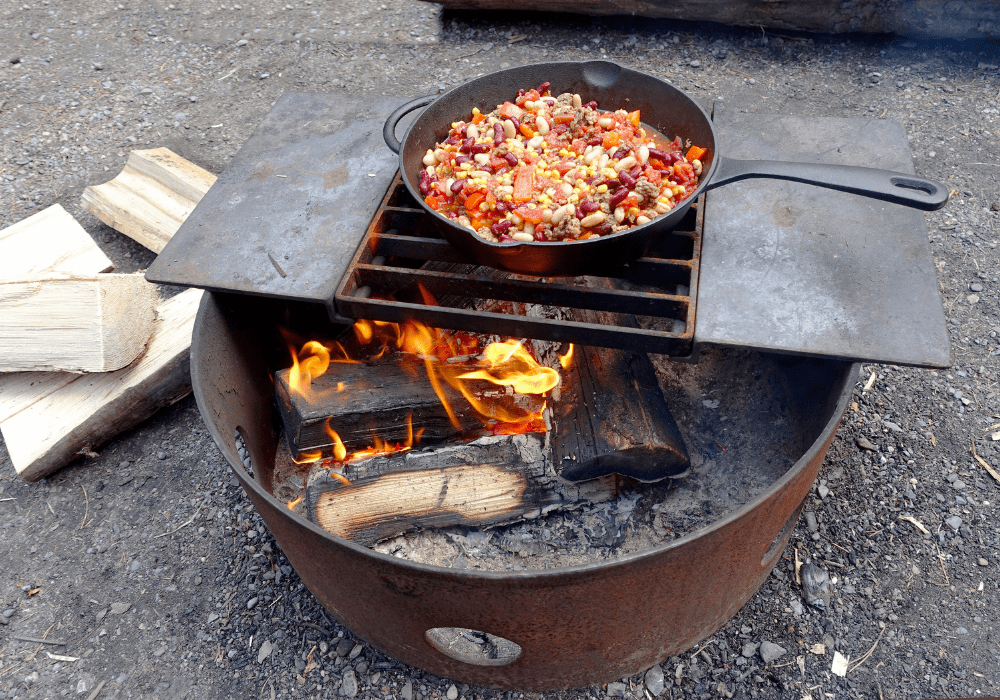
Geanna
This is very helpful information, thank you.
David Aston
Glad you think so, Geanna!
David Aston
My pleasure 🙂
Pingback: Nine Critical Day Hike Essentials - AdventureHacks
Pingback: Profitable Business Ideas, How To Get Good Ideas For Your New Business
Pingback: Business Ideas Unlimited, From Good Business Idea to Profitable Business
Pingback: Business Ideas Unlimited, From Good Business Idea to Profitable Business - RandySalars.Com
Pingback: Business Ideas Unlimited, From Good Business Idea to Profitable Business – Berita Selebriti
Pingback: Business Ideas Unlimited, From Good Business Idea to Profitable Business - Profit center
Pingback: Business Ideas Unlimited, From Good Business Idea to Profitable Business | Earning Magazine
Pingback: 8 Ways Hiking Makes You Happy - AdventureHacks
Pingback: 9 Things Every Hiker Regrets Not Doing Sooner - AdventureHacks
Pingback: Business Ideas Unlimited, From Good Business Idea to Profitable Business – Income Recipes
Pingback: 7 Ways To Treat Common Long-Trail Aches & Pains - AdventureHacks
Pingback: Business Ideas Unlimited, From Good Business Idea to Profitable Business – EasyWebTrafficForYou.com
Pingback: Essential Ultralight Backpacking Gear List | Adventure Hacks
Pingback: Top 22 Epic Winter Adventures To Experience Before Your Die
Pingback: 8 Of The Best Places For Outdoor Family Adventure In The United States - AdventureHacks
Pingback: 20 Extreme Adventures You Should Go On Before You Die
Pingback: Channel Islands National Park - AdventureHacks
Pingback: Wilder Ranch State Park - AdventureHacks
Pingback: Arroyo Seco Trail - AdventureHacks
Pingback: What Gear To Bring on A Day Hike - AdventureHacks
Pingback: 15 Best Trail Towns In The United States - AdventureHacks
Pingback: Backpacking Meal Planning 101 - AdventureHacks
Pingback: 20 Savvy Tips For Hiking In The Rain - AdventureHacks
Pingback: Congaree National Park - AdventureHacks
Pingback: 10 Tips for How to Prevent Blisters While Hiking - AdventureHacks
Pingback: 10 Tips for How to Protect Yourself from Mosquitoes & Ticks While Hiking - AdventureHacks
Pingback: 9 Helpful Tips for Hiking in the Desert - AdventureHacks
Pingback: 9 Benefits of Training for a Hiking Trip - AdventureHacks
Pingback: 14 Pros & Cons of Hiking with Trekking Poles - AdventureHacks
Pingback: 31 Greatest Adventurers Of All Time - AdventureHacks
Pingback: 20 Questions To Entertain Your Kids While On Adventures - AdventureHacks
Pingback: Carvers Gap to Roan Mountain, Appalachian Trail - AdventureHacks
Pingback: Clingmans Dome Observation Tower Trail, Appalachian Trail - AdventureHacks
Pingback: Day Hiking Checklist - AdventureHacks
Pingback: Nolichucky Ridge Cliff via Appalachian Trail - AdventureHacks
Pingback: Nantahala River to Cheoah Bald, Appalachian Trail - AdventureHacks
Pingback: Capitol Reef National Park - AdventureHacks
BebeksRun
fancy walking if you ask me ha, crazy how many people are hitting the trails now
Goody
its wild how many people hiking now. places that were basically empty on weekends a few years ago, are packed mid week now… wonder if it’s just a phase
David Aston
Probably a good thing in the grand scheme. Helping people feel grounded, less stressed and thinking clearly, feeling intensely